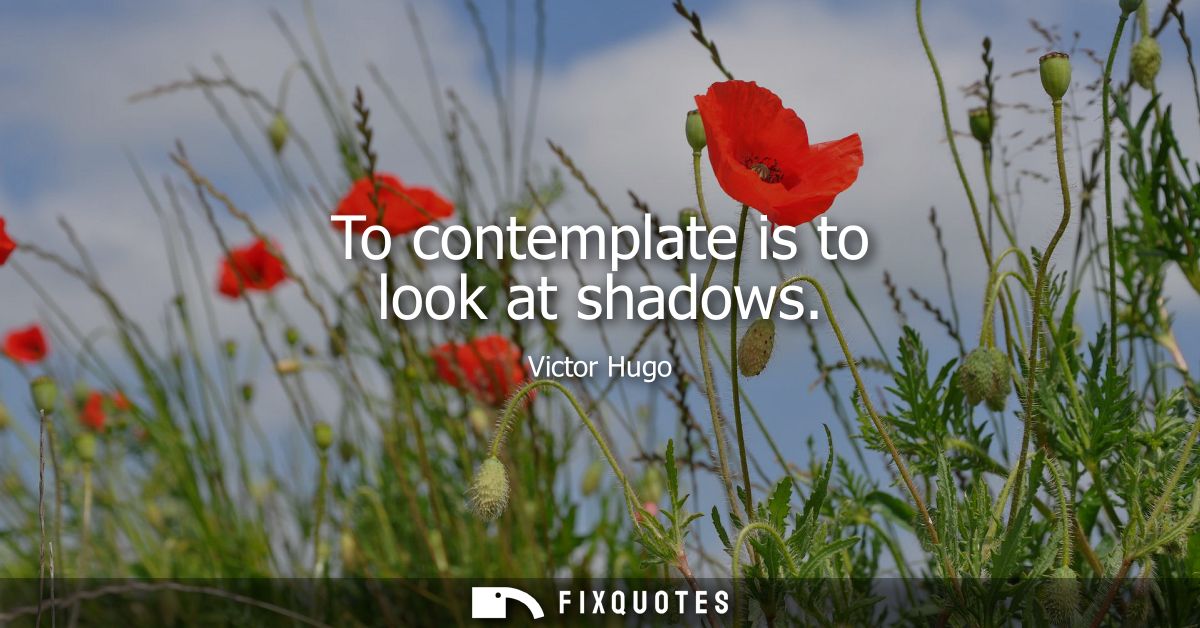"To contemplate is to look at shadows"
About this Quote
Victor Hugo’s enigmatic assertion, “To contemplate is to look at shadows,” beckons the reader into the realm of philosophical inquiry, suggesting layers beneath ordinary perception. Contemplation, in this light, transcends mere observation; it becomes a deliberate engagement with the subtle, often obscured elements of existence. Shadows, by their very nature, are not objects themselves but the forms cast by objects blocking light. They are symbolic of hidden realities, uncertainties, or truths in obscurity.
To look at shadows is to recognize that much of what shapes our world lies beyond immediate, clear understanding. We often encounter phenomena not in their purest essence but filtered through distortion, ambiguity, or partial knowledge. The act of contemplation, then, demands a willingness to peer into these uncertain spaces, to wrestle with ambiguity and with questions that evade straightforward answers.
Hugo’s metaphor gestures toward the intellectual and spiritual humility required for genuine understanding. True contemplation refuses easy certainties; it acknowledges the limitations of our sight and the complexity of reality. Shadows evoke the need to reconstruct meaning from suggestion, inference, and subtlety. They invite us to imagine and intuit what is hidden or obscured, rather than to settle for surfaces or appearances.
Furthermore, there is a moral implication at play. Shadows may also represent the less visible aspects of human existence: sorrow, suffering, secrets, doubts. To contemplate is not only to celebrate light, but to approach the darkness empathically, to give thoughtful attention to the neglected or marginalized. In contemplating shadows, one accepts discomfort and confusion as part of the path to wisdom.
Hugo’s words, therefore, elevate contemplation to an art of navigating uncertainty. Human thought achieves depth not by shunning shadows, but by facing them, learning to glean meaning from their shapes and their interplay with light. This is an invitation to acknowledge both what we know and what remains veiled, nurturing insight in the fertile ground between darkness and illumination.
About the Author

